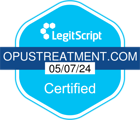How does Sublocade work, and why is it an effective medication-assisted treatment for some patients dependent on opioids, including prescription pain relievers and illegal drugs?
Buprenorphine is an essential medication for opioid dependence; Sublocade is one of the forms of buprenorphine available. We’ll also talk more about this class of drugs called opioids and how they affect the body.
What Is Opioid Use Disorder?
Opioid drug forms include prescription medications and illicit substances. Sublocade treatment is for opioid use disorders, including psychological addiction and physical dependence.
- Opioid medicines are a class of drugs that, as prescriptions, are for acute pain management.
- Oxycodone (OxyContin) and hydrocodone (Vicodin) are two examples of prescription opioids for pain relief. Codeine and morphine are also opioid analgesics.
- The class of drugs is also sometimes known as opiates.
- Synthetic opioids include fentanyl, and heroin is a widely abused illicit opioid.
- The addiction potential is higher after a prolonged period of use.
All are central nervous system depressants, along with having more subjective effects.
- Opioids are addictive because they can also create euphoria, deep relaxation, or feelings of well-being in the activation of receptor sites.
- These rewarding effects can trigger your brain’s reward cycle.
- That reward cycle is what then leads to the development of an addiction.
Unfortunately, prescription opioids can also lead to significant medical conditions outside of addiction, including overdose and death, often due to respiratory depression.
If you take an opioid of any kind at a dose of more than your body can handle, it can slow down essential functions. For example, these substances affect breathing and heart rate.
- If you take too much, you may experience shallow breathing, slow reaction times, severe sleepiness, and problems with respiratory function.
- An opioid overdose can ultimately be fatal, and the risk for opioid overdose is relatively high.
- It is a medical emergency in every case.
- You should call 911 and seek medical attention or emergency treatment right away for the treatment of opioid overdose.
Help for Opioid Addiction
It’s not always easy for an opioid user to know what the best treatment may be. At the same time, the loved ones of the user may be confused, stressed, and unsure of how to help too. Therefore, it’s essential to consider different treatment options– one of which could be Sublocade.
Sublocade is an opioid addiction treatment option that could prove beneficial to users after the initial three phases have been completed. It’s an extended-release buprenorphine treatment that alongside therapy can have positive effects on overcoming opioid addiction. However, before we uncover the facts, and benefits and consider its suitability, it’s essential to understand opioids and opioid addiction first.
How Does Medication-Assisted Treatment Work for the Treatment of Opioid Use?
The opioid epidemic has led to hundreds of thousands of deaths because of overdoses.
- The epidemic started in the 1990s as doctors increasingly prescribed these prescription drugs.
- After developing an addiction to prescription drugs, many people may move onto street drugs options that are cheaper and easier to get.
- Having an opioid addiction can ruin your life and your mental and physical health. A complete treatment program can help you recover, however.
One part of a complete treatment plan being treated with sublocade may be medication-assisted treatment or MAT. MAT uses a combination of FDA-approved medicines with behavioral therapy and counseling. The variety of approaches, including medication during treatment, tends to help people have a sustainable, long-term recovery.
- Opioid use disorder (OUD) is a chronic illness, and that’s why medications can be helpful in its management and treatment, similar to other medical conditions.
- For opioid addiction treatment, there are three FDA-approved treatments—buprenorphine, methadone, and naloxone. All are proven to be safe and effective, primarily when combined with counseling and social support.
- Those three medications are generics, and there are several brand-name medications for opioid dependence, one of which is Sublocade.
- Research and clinical studies back the use of MAT as a holistic approach to treating addiction, drug dependence, and withdrawal symptoms.
MAT helps reduce the need for inpatient detox services for some people as well. While every treatment plan is unique, the overarching goal with MAT is complete recovery so that you can regain control over your life.
Benefits of MAT
The treatment approach for drug abuse and addiction has many benefits, including:
- Improvements in patient survival
- Reduced opioid cravings
- Better treatment retention rates
- Reduced criminal activity and illegal opiate use
- Patients are often better able to obtain and maintain employment
- Birth outcomes improve in women with a SUD who are pregnant
- Lowered risk of contracting diseases like hepatitis C and HIV
Sometimes, when a baby is born dependent on opioids, it will go through neonatal opioid withdrawal syndrome. The baby can have everything from mild symptoms like a runny nose to more severe symptoms such as tremors. Medication-assisted treatment may be used in these cases as well.
How Does Sublocade Work?
Sublocade is a brand-name version of the generic form of buprenorphine. Buprenorphine treatment is a MAT for moderate to severe opioid dependency, especially for patients at risk of severe withdrawal or overdose.
According to clinical studies, you need a prescription for Sublocade, and it can help prevent withdrawal symptoms and cravings for opioids.
A few things to know about taking the monthly injection and buprenorphine, and side effects of sublocade include:
- For your healthcare provider to prescribe this buprenorphine-containing medicine, you must initially take a type of buprenorphine that you put under your tongue or inside your cheek. You hold it there until it dissolves and releases buprenorphine. You’ll probably need to take this type of medicine for at least seven days to control symptoms of opioid withdrawal. Then, you might change to taking Sublocade.
- The active ingredient in this prescription medicine, a form of buprenorphine, is a partial opioid agonist. A partial agonist works similarly to opioids and opiates. They activate the same receptor sites in the brain, but more mildly, to help alleviate difficult withdrawal symptoms. While this form of buprenorphine does activate those receptors, the risk for opioid overdose is much lower.
- As a maintenance-based MAT, this formulation of buprenorphine is an injection given under your skin or subcutaneous tissue. It’s a once-a-month injection for the maintenance dose from a healthcare provider to reduce the potential for relapse.
- Injecting sublocade is a restricted program as far as who can use it.
Sublocade vs. Suboxone
Suboxone is similar to Sublocade in that both are buprenorphine medications and are partial opioid agonists approved for the treatment of opioid use disorder. Both are also brand-name drugs with clinical study research and clinical trials backing their use and effectiveness.
There are also critical differences between the two.
- Suboxone is a buprenorphine product that also contains naloxone.
- Naloxone is an opioid antagonist, which blocks the effects of opioids
- When you first stop taking substances you’re dependent on; you may experience withdrawal symptoms. During the induction phase and treatment origin, you can take Suboxone to reduce the symptoms.
- You can also take Suboxone during the maintenance phase to control cravings, whereas Sublocade is only for maintenance.
- Suboxone is an induction and maintenance treatment for severe opioid dependence, while Sublocade is only a maintenance treatment.
- Suboxone is also a daily medication once you reach an effective dose.
- This oral buprenorphine releases into your body. Most people take average doses of Suboxone once a day for some time to improve the treatable outcome.
Common Side Effects and Adverse Events
While MAT for OUD is generally safe and effective, there are potential side effects of any form of buprenorphine and Sublocade in general.
- Mild side effects can include constipation, feeling dizzy and lightheaded, headache, and nausea or vomiting.
- Some people may also feel more tired than usual. Injection site pain or injection site reactions are possible too.
- You may experience slower reaction times or a decrease in blood pressure, or an irregular heartbeat.
- You could experience changes in bowel movements, and some people have adrenal insufficiency.
- A dose adjustment may help if you have side effects.
- With adrenal insufficiency, your adrenal gland may be affected. It may not be able to produce the proper amount of hormones. Adrenal insufficiency is considered a severe side effect.
Serious side effects can include liver problems like an increase in liver enzymes or an allergic reaction, and these are rare and are an emergency medical situation.
If you take buprenorphine maintenance therapy and stop using it suddenly, you may also have opioid withdrawal symptoms because the medication can cause physical dependence. There is a boxed warning to be aware of with buprenorphine and rare and common side effects, which your healthcare provider can talk to you about.
Talking to a Doctor About Buprenorphine for People with Opioid Use Disorder
The American Society of Addiction Medication recommends buprenorphine in this medication to treat OUD and opioid withdrawal symptoms.
Pregnant women may use buprenorphine, but only under careful supervision from their health care provider. The use of MAT during pregnancy may pose less risk to the unborn baby, but at the same time, can lead to unwanted side effects. These are things to ask your provider about if you’re opioid-dependent and pregnant. Your health care provider can go over benefits and risks with you.
Buprenorphine in patients always needs careful medical supervision, and doctors should counsel patients on all risks and benefits. Considerations of drug dependence with buprenorphine levels should be part of this conversation, as should the potential for adverse effects like breathing difficulties or life-threatening respiratory depression.
MAT as Part of a Treatment Program
No MAT has approval for use without behavioral therapy because the medication itself isn’t getting to the root cause of the addiction.
- Instead, it’s helping with physical factors like opioid withdrawal symptoms and cravings.
- Taking the medication on its own without more in-depth treatment for opioid use is not likely to help you maintain a sustained recovery and goes against medical advice.
- We encourage you to contact us to learn more about medication-assisted treatment and other options for an opioid use disorder, including if you have severe addiction. Short and long-term treatment options are available.
Getting Support For Opioid Addiction
If you are concerned about your opioid addiction, whether or not you decide that Sublocade is right for you, you may also need ongoing support to cope with the lifestyle changes and triggers, and monitor your life overall. As much as your counselor can assist here, you may not wish to undergo this treatment forever – nor may it be possible. Yet, other forms of support may be available.
While detoxification, therapy, and medicinal treatment can be extremely successful, you may find that self-help is important. This can be achieved via support groups and self-improvement. A prime example of this kind of group here is Narcotics Anonymous. However, you may want to consider what kind of specific support is available in your area or even online.
Stopping treatment with sublocade is something that is best handled by professionals like Opus Health and can be arranged by calling 855-953-1345; after treatment, we can help you with aftercare planning and arrangements with a community-based program, including counseling.













